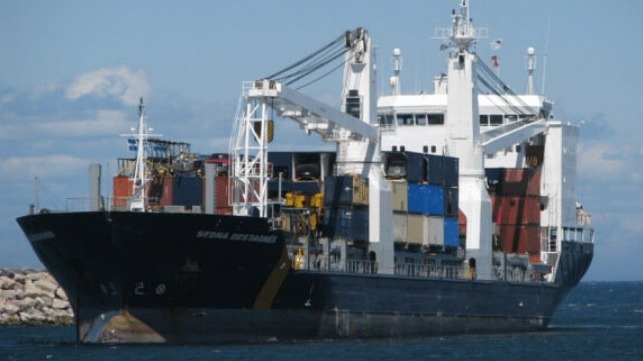Great Lakes Short-Sea Shipping Could Improve US-Canada Cargo Movement

A new study proposes reducing the reliance on trucking in transporting goods between the U.S. and Canada by increasing short-sea shipping on the Great Lakes. The study authored by Fluid Intelligence, a partnership of Hamilton-Oshawa Port Authority (HOPA Ports) and the McMaster Institute for Transportation & Logistics with support from Transport Canada, suggests that the U.S and Canada can learn from Europe and Asia on the benefits and effectiveness of short sea transportation instead of over-road trucking.
For the two trading partners, exploring short-sea shipping services on the Great Lakes can reduce highway and border congestion, lower greenhouse gas (GHG) emissions, and improve supply chain resilience. It could also contribute to improving highway safety, enhancing modal balance, reducing transportation costs, and increasing reliability.
Data show the U.S. and Canada share one of the largest trading relationships in the world, with total two-way trade valued at $794 billion in 2022. Notably, cross-border goods movement within the Great Lakes region has been growing rapidly, despite the study’s finding that there are complex supply chains. The region accounts for more than 50 percent of all U.S.-Canadian bilateral border trade. If it were a single country, it would have a gross domestic product of $6 trillion, making it the third biggest economy in the world.
“Short sea shipping is an idea whose time has come,” said Ian Hamilton, HOPA Ports President & CEO. “This study gives us the real data we need to identify the most promising commodities and routes, where marine transportation can help address our mounting goods movement challenges.”
The Foundational Study on Cross-Border Short-Sea Shipping Opportunities calculates that approximately 28.5 million tonnes of cargo per year originating in Ontario is transported by truck to the U.S., with 70 percent destined for a Great Lakes state. Conversely, at least 24 million tonnes of cargo per year originate in the U.S. and move by truck into Ontario, with 55 percent originating in a Great Lakes state.
Notably, iron and steel remain the largest tonnage category exports crossing by truck and originating from Ontario, accounting for about 3.3 million tonnes moving to Great Lakes states, especially Michigan and Ohio.
The study shows that although rail is the main complementary mode, the volumes are way below those transported by trucks. In 2021, 13.5 million tonnes crossed into the U.S. from Ontario, with 54 percent destined for a Great Lakes state. It highlights the fact that rail has been facing challenges competing with trucks for higher-value cargo.
Overdependence on trucks, considering that currently over 12,000 trucks per week make cross-border trips between Southern Ontario and U.S Great Lakes port areas, means that trucks continue to transport non-perishable commodities that are ideal candidates for a marine service to handle the long-haul “middle mile.” Overall, there are approximately 5,000 (within a 50-kilometer radius) and 12,000 (within a 100-kilometer radius) truck trips per week between five U.S Great Lakes ports and southern Ontario.
With trucks being the main mode of goods transportation between the two neighbors, North American supply chains continue to grapple with major bottlenecks centering on highway congestion, border delays, lack of transportation redundancy, driver shortages, and rising fuel costs, storms that are being exacerbated by population growth and density.
The situation is worse in southern Ontario, Canada’s busiest economic region where critical infrastructures are struggling to keep up with the demand on its highways. The economic cost of congestion in the Greater Toronto and Hamilton Area alone is estimated to be up to $6 billion annually.
The study shows that apart from tackling the road transport bottlenecks, short-sea shipping offers a significant environmental advantage, as one marine vessel can carry the same cargo capacity as 963 trucks while emitting just 15 percent of the CO2 per metric tonne/kilometer. A case in point is diverting just 10 percent of the existing cargo currently moved by truck between southern Ontario and the port of Chicago, a scenario that can lead to the transportation system saving 220 tonnes of GHG emissions per week.
“A competitive and resilient goods movement sector is vital to the industries and supply chains that underpin Ontario’s economy and connect Ontario to export markets – and it’s changing,” said Mark Ferguson, Senior Research Associate at the McMaster Institute.
The study calls for the U.S. and Canada to learn from the European short-sea shipping industry which plays an important role in the continent’s transportation infrastructure. The authors conclude that North America could achieve the same benefits by moving a considerable amount of cargo and realizing significant environmental benefits.
